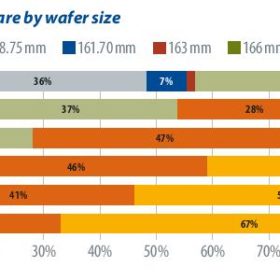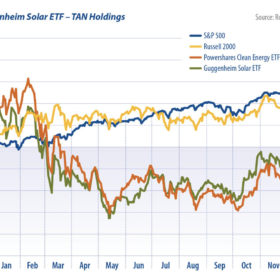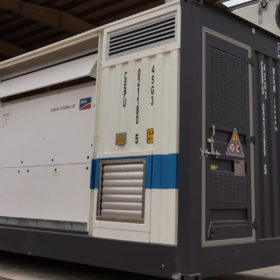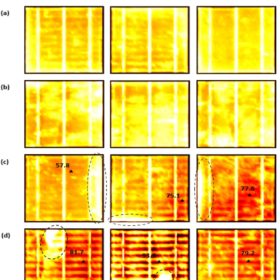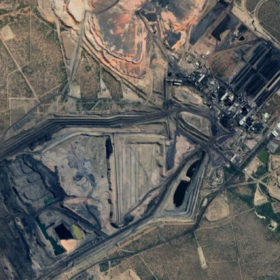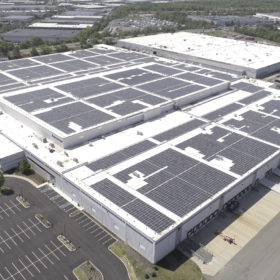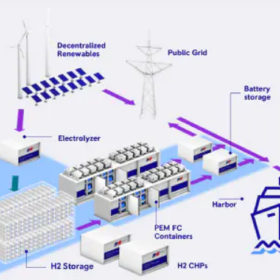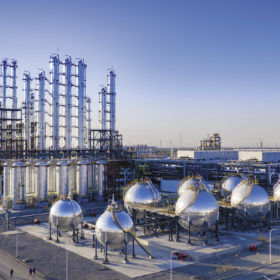A 200 GW solar year in 2022
Structural imbalances in the supply chain and the energy intensity and consumption controls that China imposed in late September have caused prices for most PV module materials and components to continue to rise. Shipping fees and PV plant construction costs also remain high. PV plants in many regions will therefore be postponed until next year, but it remains unclear when module prices will start to fall. Despite these challenges, the global race to cut carbon emissions continues, and InfoLink’s Corrine Lin forecasts a bright future for PV deployments in 2022.
Guggenheim Solar Index: Two sides to PV import tariffs
Solar stocks underperformed the broader markets in November, writes Jesse Pichel of ROTH Capital Partners. This is in large part thanks to uncertainty coming from the United States, where the Court of International Trade reinstated an exemption from import tariffs for bifacial modules – a decision that will likely see an appeal.
The Hydrogen Stream: Big push from Iberian peninsula
A Spanish consortium has started commissioning tests to produce renewable hydrogen in Mallorca, while another consortium led by Portuguese energy giants EPD and Galp is set to develop 100MW of green hydrogen production in Sines, Portugal. Lightsource bp and Dourogás have also agreed to set up a joint venture to invest in solar and green hydrogen infrastructure in Portugal.
Damaging defects in silicon solar cells
Scientists in the UK investigated the relationship between two of the most worrisome defects that can affect solar cells in the field – cracking and hotspots. Their work analyzed solar cells with different levels of cracking under varying light conditions, finding that the most severely cracked cells were considerably more likely to run at high temperatures and form damaging hotspots.
China and India to drive record world coal demand next year
Advances in solar power and other clean energy technologies have failed to keep up with demand for electricity as economies rebound from the Covid crisis and China and India’s fossil fuel appetite will ensure the world stays well short of what is needed for a net zero 2050 for at least the next three years.
The weekend read: 24/7 hourly matching – a new granular phase of renewable energy sourcing
It’s what Google calls its “biggest sustainability moonshot yet” – 24/7 hourly matching – a new granular phase of renewable energy sourcing. The pursuit of 24/7 moves beyond buying enough renewable energy to match annual consumption, to matching consumption every hour of every day. Some say 24/7 matching could push up the price of renewables, but others say 24/7 is the only way to drive home decarbonization, minimize greenwashing, and create a truly net-zero energy system.
The Hydrogen Stream: Fuel cell solutions for electrical peak load coverage
Rolls-Royce is supplying its mtu hydrogen technology for the container terminal currently under construction at the Port of Duisburg in Germany. Furthermore, German energy company RWE wants to produce green hydrogen at the Pembroke Power Station site in Wales and Norway’s Scatec discussed plans for large-scale seawater desalination, hydrogen and ammonia production based on renewable power with the Egyptian government. Meanwhile, the EU has adopted a set of legislative proposals to decarbonize the EU gas market by facilitating the uptake of low carbon gases, including hydrogen.
The Hydrogen Stream: Longi wants to reach electrolyzer capacity of 2 GW by 2023
Elsewhere, Air Products is planning to build a 2 GW electrolysis plant in Saudi Arabia and Protium is deploying its first 100 kW electrolyzer in the U.K.
Colored optic filters for BIPV products
Dutch researchers have used optic colored filters to make building-integrated PV products more suitable for urban environments with cultural heritage value. They discovered that the filters do not affect a cell’s open-circuit voltage and fill factor, but only the short-circuit current.
The weekend read: Solar PV development disrupted
It may be the best of times, or it’s the worst – it rather depends on who you talk to. Either way, 2021 has not been a dull year in the global solar industry. Polysilicon and commodities prices, shipping costs, tariffs, and energy shortages have all taken turns to give the supply chain a beating, but has it sent PV development off course?
